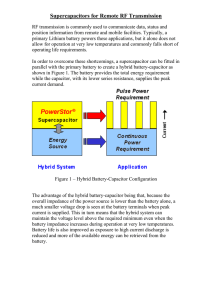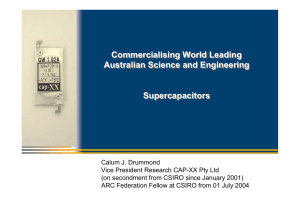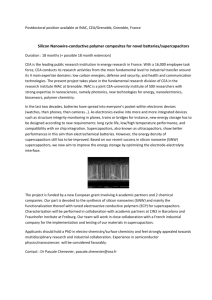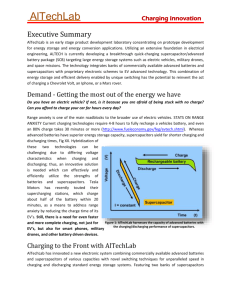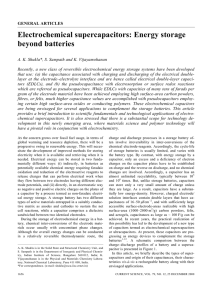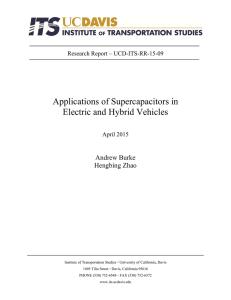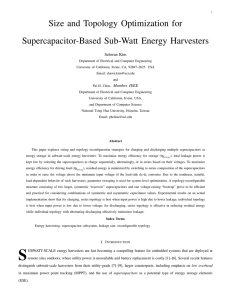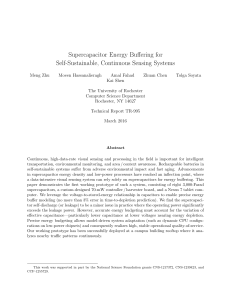Supercapacitors for RTC & Memory Back-up
advertisement
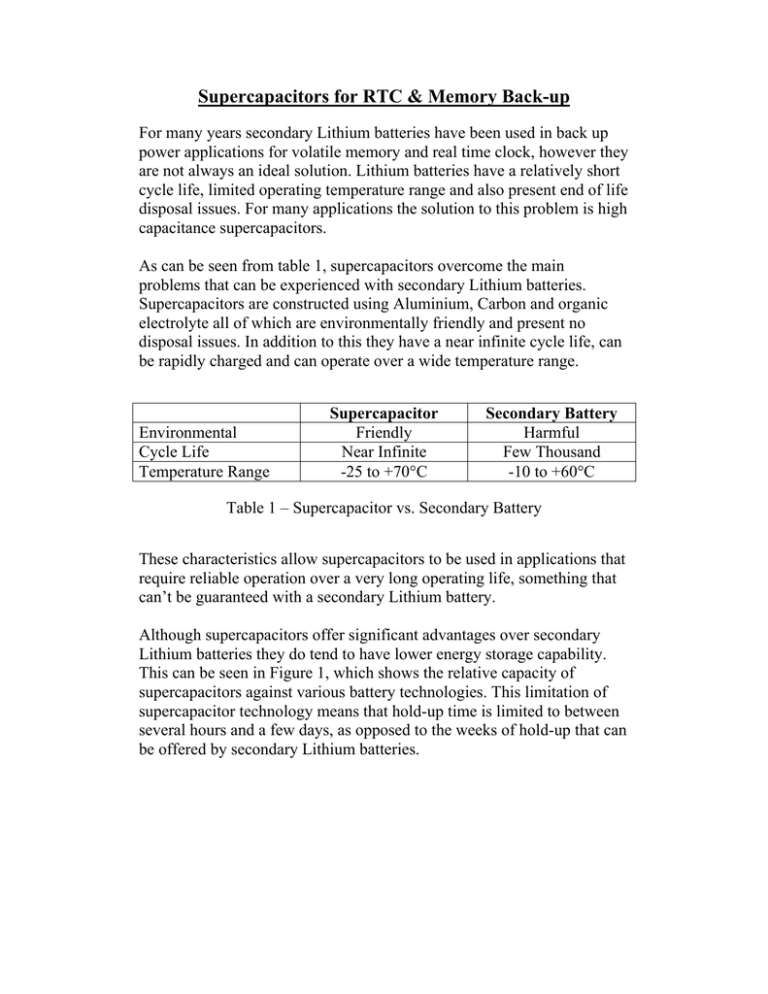
Supercapacitors for RTC & Memory Back-up For many years secondary Lithium batteries have been used in back up power applications for volatile memory and real time clock, however they are not always an ideal solution. Lithium batteries have a relatively short cycle life, limited operating temperature range and also present end of life disposal issues. For many applications the solution to this problem is high capacitance supercapacitors. As can be seen from table 1, supercapacitors overcome the main problems that can be experienced with secondary Lithium batteries. Supercapacitors are constructed using Aluminium, Carbon and organic electrolyte all of which are environmentally friendly and present no disposal issues. In addition to this they have a near infinite cycle life, can be rapidly charged and can operate over a wide temperature range. Environmental Cycle Life Temperature Range Supercapacitor Friendly Near Infinite -25 to +70°C Secondary Battery Harmful Few Thousand -10 to +60°C Table 1 – Supercapacitor vs. Secondary Battery These characteristics allow supercapacitors to be used in applications that require reliable operation over a very long operating life, something that can’t be guaranteed with a secondary Lithium battery. Although supercapacitors offer significant advantages over secondary Lithium batteries they do tend to have lower energy storage capability. This can be seen in Figure 1, which shows the relative capacity of supercapacitors against various battery technologies. This limitation of supercapacitor technology means that hold-up time is limited to between several hours and a few days, as opposed to the weeks of hold-up that can be offered by secondary Lithium batteries. Li Primary Battery 10 0 Ni-Cd Battery 10 -1 10 -2 Capacity (A/h) Li Secondary Battery PowerStor B Series Cylindrical Type 10 -3 10 -4 PowerStor K Series Coin Cell Type 10 -5 10 -6 10 -4 10 -2 10 0 10 2 Load Current (A) Figure 1 - Relative Capacity of Supercapacitor & Battery Technologies When selecting a supercapacitor for low current back-up applications allowance has to be made for the capacitor parasitic leakage current. Leakage current effectively causes an additional load on the capacitor causing it to discharge faster than expected. The following example shows the impact of leakage current on hold-up time: Hold-up time is given by: T = C (V1 – V2) / Il Where T is the hold-up time, C is capacitance, V1 is the charge voltage prior to discharge, V2 is the minimum allowable voltage at the end of the discharge and Il is the load current. Using a 0.22F, 5.5V KR series part in an application that has a load current of 2µA, nominal charge voltage of 5V and a minimum operating voltage of 4.2V, the hold-up time is; = 0.22F x (5V – 4.2V) / 2µA = 88000 seconds = 24.4 Hours Now if we allow for the capacitor leakage current, which is typically 1µA per Farad, the hold-up time is; = 0.22F x (5V – 4.2V) / 2.2µA = 80000 seconds = 22.2 Hours Clearly leakage current has an impact on the achievable hold up time so finding a supercapacitor solution with very low leakage current is important. Figure 2 shows typical leakage current for a PowerStor® KR series 1F, 5.5V capacitor compared with two leading competitors. 35 Leakage Current (µA) 30 Competitor 1 Competitor 2 KR Series 25 20 15 10 5 0 0 20 40 60 Time (Hrs) 80 100 Figure 2 - 1F, 5.5V Coin Cell Leakage Current Comparison Not only does the KR series part have lower overall leakage current but it also reaches these low current levels very quickly. This allows maximum hold-up to be achieved even after a relatively short charge time. In conclusion, supercapacitors offer a cost effective alternative to secondary Lithium batteries in back-up applications. They provide reliable operation over the life of the equipment and present no disposal issue at end of life. In addition to this they are a better fit with modern automated production techniques, allowing easier and more reliable assembly. For more information on PowerStor® supercapacitors from Cooper Bussmann visit www.cooperbussmann.com.
